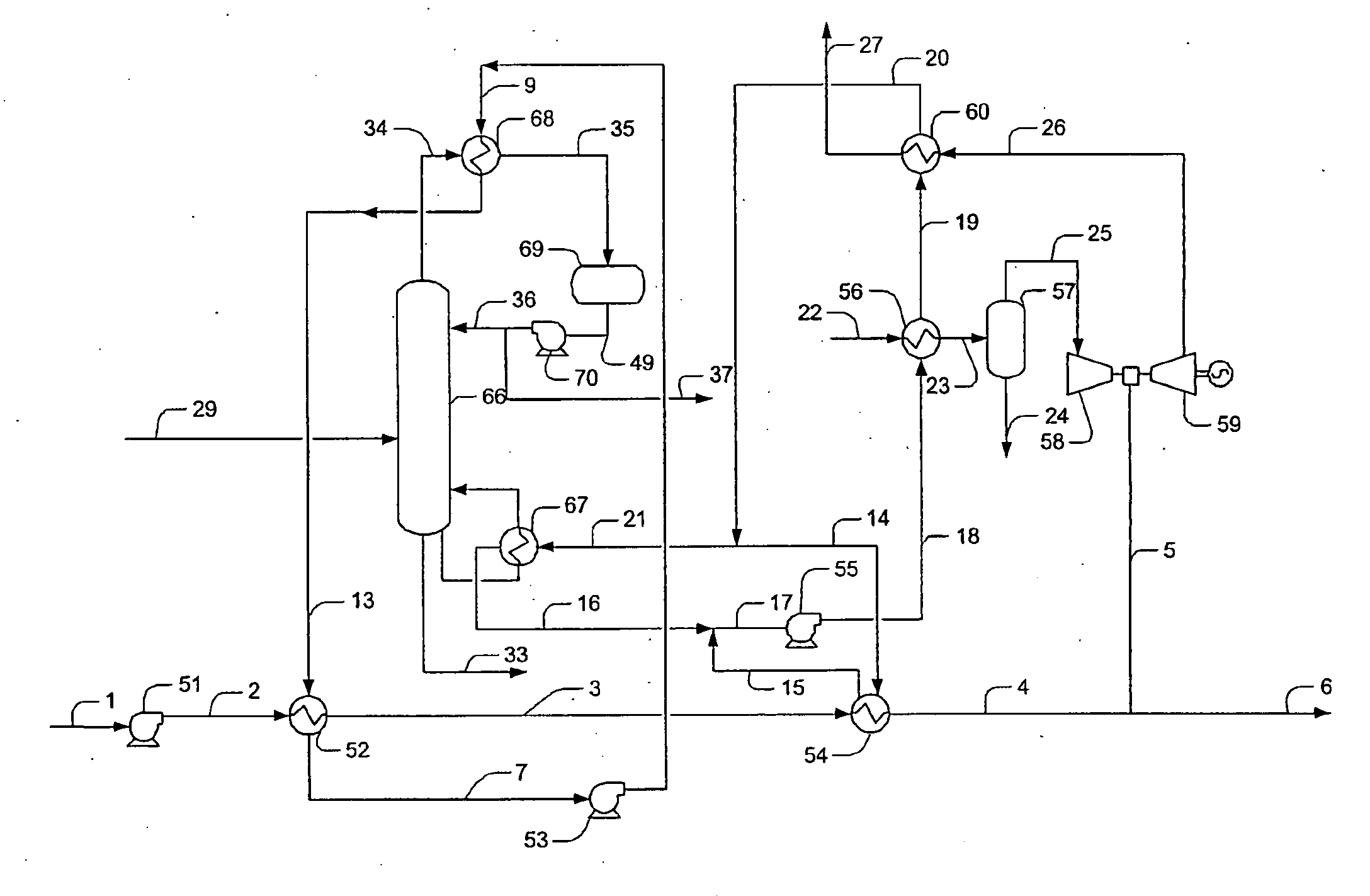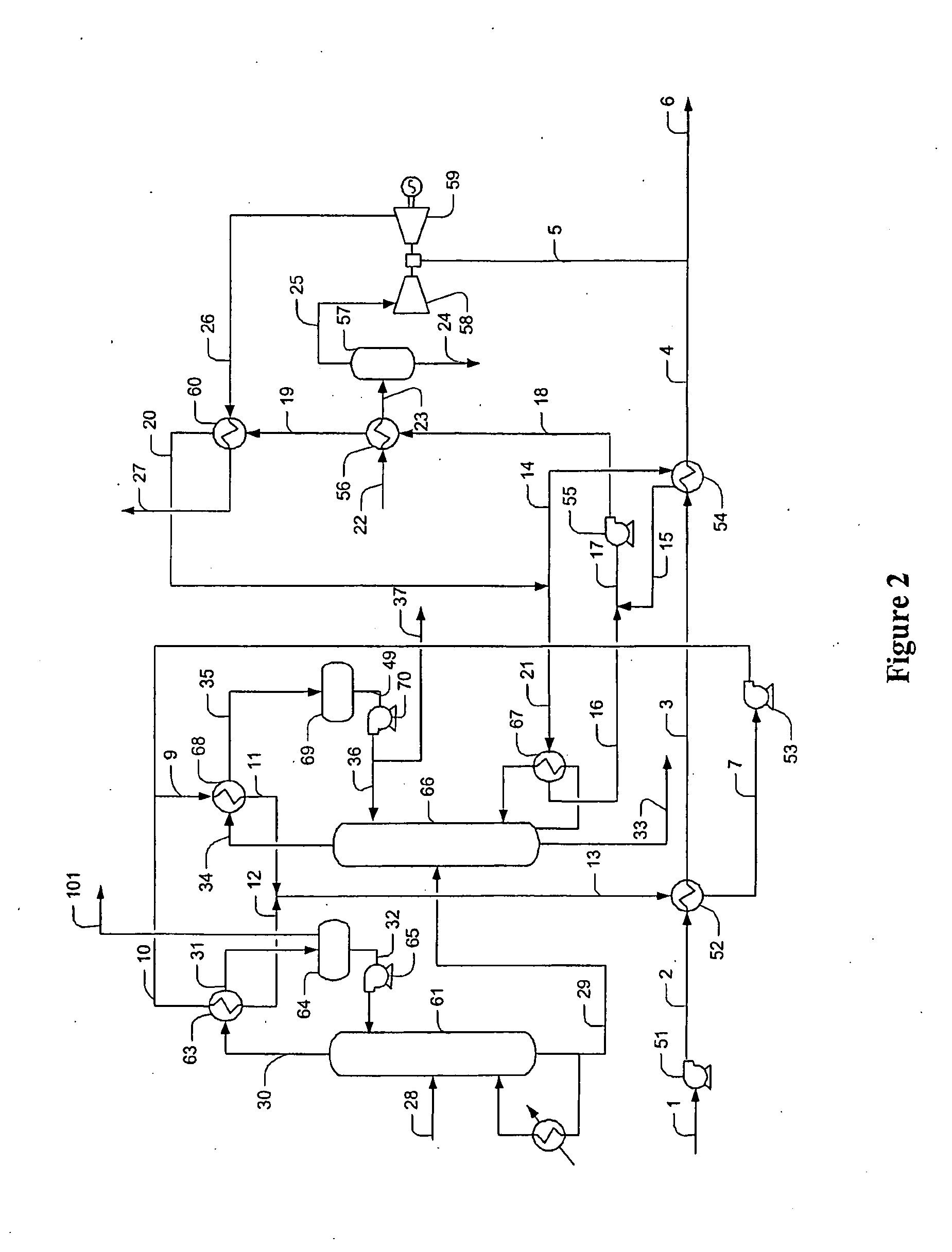Integration of Lng Regasification with Refinery and Power Generation
a technology of lng regasification and power generation, applied in the direction of machines/engines, machine/engine discharging methods, lighting and heating apparatus, etc., can solve the problems of environmental impact in either scenario, lng regasification is remarkably energy intensive process, and most conventional lng regasification processes are energy inefficient or often environmentally problemati
- Summary
- Abstract
- Description
- Claims
- Application Information
AI Technical Summary
Benefits of technology
Problems solved by technology
Method used
Image
Examples
Embodiment Construction
[0016]The inventor discovered that LNG can be regasified in a plant configuration in which one or more refinery processes and / or power generation schemes provide a continuous heat source for regasification. Most preferably, LNG regasification is achieved using at least two heating stages, wherein the first heating stage employs a heat transfer fluid that is thermally coupled with a refinery component (and especially an overhead condenser), and wherein the second heat stage employs another heat transfer fluid that is thermally coupled with a power generation component (and especially an intake air chiller and / or flue gas exchanger).
[0017]For example, in one preferred aspect, a regasification terminal is thermally coupled to a hydrocarbon splitter, and especially a C3 splitter in a refinery to produce C3 (propane) and C3= (propylene) products, while the C3 splitter generates refrigerant for chilling gas turbine inlet air for power production. Additionally, LNG regasification can be fu...
PUM
 Login to View More
Login to View More Abstract
Description
Claims
Application Information
 Login to View More
Login to View More - R&D
- Intellectual Property
- Life Sciences
- Materials
- Tech Scout
- Unparalleled Data Quality
- Higher Quality Content
- 60% Fewer Hallucinations
Browse by: Latest US Patents, China's latest patents, Technical Efficacy Thesaurus, Application Domain, Technology Topic, Popular Technical Reports.
© 2025 PatSnap. All rights reserved.Legal|Privacy policy|Modern Slavery Act Transparency Statement|Sitemap|About US| Contact US: help@patsnap.com



